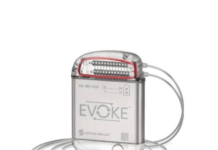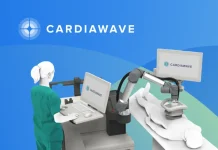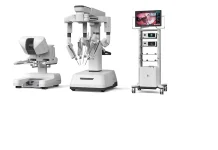Hyperion Surgical announced today that it completed the world’s first robotic-assisted intravenous (IV) catheterisation using its Ivy platform.
Ivy integrates advanced imaging, AI and robotic precision in a robotic vascular access platform to enable a no-touch approach to IV placements. Miami-based Hyperion’s clinical team performed the procedure in a first-in-human clinical study earlier this year.
The company says it marks the first clinical use of a robotic-assisted system for peripheral IV catheterisation.
Related: AtriCure treats first patient in the BoxX-NoAF clinical trial
Hyperion said it aims for Ivy to address the long-standing clinical challenge of high variability and failure rate in IV placements. Its design enables the placement of the catheter — not just the needle — into the blood vessel.
Ivy, a semi-autonomous system, offers high-quality imaging guidance using direct, continuous visualization and AI vessel recognition along with robotic insertion and stabilization. Current handheld devices require significant psychomotor skills to continuously manually stabilize the ultrasound probe and needle. Instead, Ivy holds the probe and needle itself, while performing the catheter insertion without user contact.
Hyperion said this could enable a no-touch technique to lower the cognitive and coordination demands for image-guided IV placements. The system also has scalability, thanks to its rapid setup and procedure times, the company says.
Next, the company plans to submit Ivy to the FDA and anticipates additional clinical evaluations for the platform. It hopes to begin commercialisation within the next 18 months.
“No patient should ever be stuck more than once to place an IV. It’s long past time that we recognised that difficult-to-stick patients need a different paradigm,” said Dr. Eric Peterson, founder and CEO of Hyperion Surgical. “Completing our first-in-human study represents the culmination of years of engineering, design, and clinical collaboration. We believe robotic and AI-assisted vascular access has the potential to deliver new levels of consistency, confidence, and predictability for clinicians and patients.”






